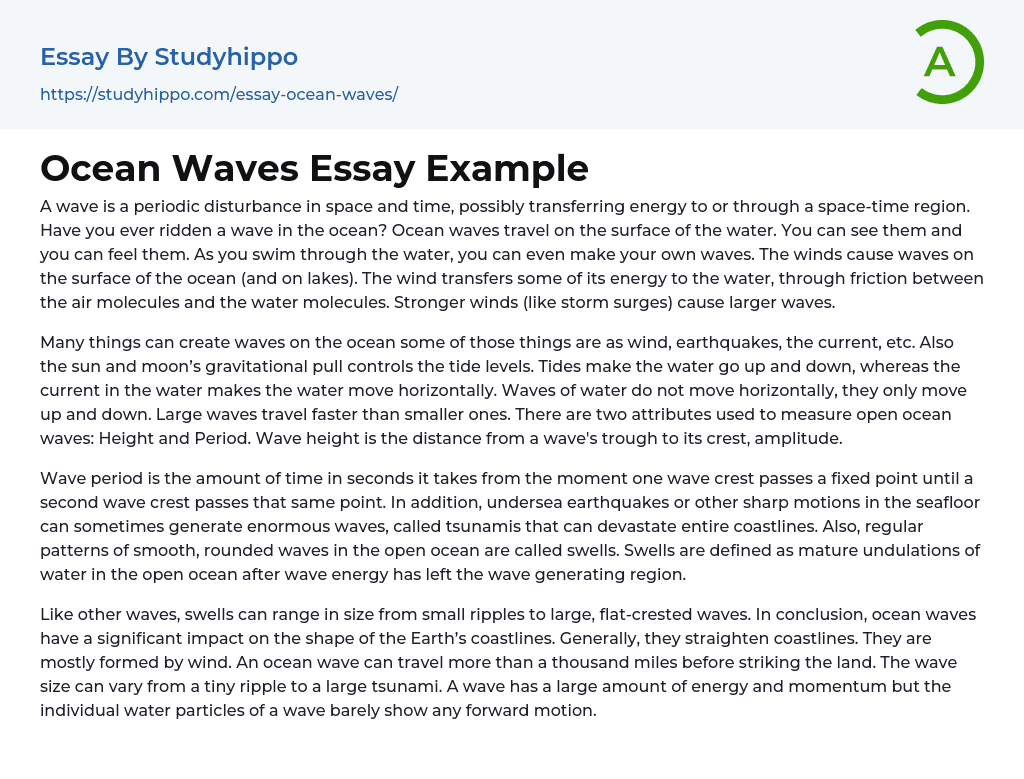A wave is a periodic disturbance in space and time, possibly transferring energy to or through a space-time region. Have you ever ridden a wave in the ocean? Ocean waves travel on the surface of the water. You can see them and you can feel them. As you swim through the water, you can even make your own waves. The winds cause waves on the surface of the ocean (and on lakes). The wind transfers some of its energy to the water, through friction between the air molecules and the water molecules. Stronger winds (like storm surges) cause larger waves.
Many things can create waves on the ocean some of those things are as wind, earthquakes, the current, etc. Also the sun and moon’s gravitational pull controls the tide levels. Tides make the water go up and down, whereas the current in the w
...ater makes the water move horizontally. Waves of water do not move horizontally, they only move up and down. Large waves travel faster than smaller ones. There are two attributes used to measure open ocean waves: Height and Period. Wave height is the distance from a wave's trough to its crest, amplitude.
Wave period is the amount of time in seconds it takes from the moment one wave crest passes a fixed point until a second wave crest passes that same point. In addition, undersea earthquakes or other sharp motions in the seafloor can sometimes generate enormous waves, called tsunamis that can devastate entire coastlines. Also, regular patterns of smooth, rounded waves in the open ocean are called swells. Swells are defined as mature undulations of water in the open ocean after wave energy
has left the wave generating region.
Like other waves, swells can range in size from small ripples to large, flat-crested waves. In conclusion, ocean waves have a significant impact on the shape of the Earth’s coastlines. Generally, they straighten coastlines. They are mostly formed by wind. An ocean wave can travel more than a thousand miles before striking the land. The wave size can vary from a tiny ripple to a large tsunami. A wave has a large amount of energy and momentum but the individual water particles of a wave barely show any forward motion.
- Atmosphere essays
- Biodiversity essays
- Coral Reef essays
- Desert essays
- Earth essays
- Ecosystem essays
- Forest essays
- Lake essays
- Natural Environment essays
- Ocean essays
- Oxygen essays
- Rainbow essays
- Sea essays
- Soil essays
- Volcano essays
- Water essays
- Wind essays
- Air Pollution essays
- Carbon Dioxide essays
- Climate essays
- Deforestation essays
- Ecology essays
- Endangered Species essays
- Environmental Issues essays
- Environmental Protection essays
- flood essays
- Greenhouse Gas essays
- Hurricane essays
- Nature essays
- Pollution essays
- Renewable Energy essays
- Sustainability essays
- Tornado essays
- Traffic essays
- Tsunami essays
- Water Pollution essays




